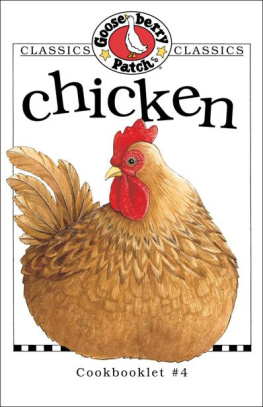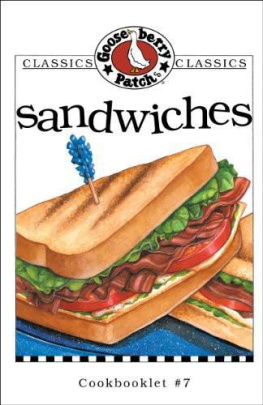THE
BEST THERE EVER WAS
DAN PATCH AND THE DAWN OF THE AMERICAN CENTURY
SHARON B. SMITH

Copyright 2012 by Sharon B. Smith
All Rights Reserved. No part of this book may be reproduced in any manner without the express written consent of the publisher, except in the case of brief excerpts in critical reviews or articles. All inquiries should be addressed to Skyhorse Publishing, 307 West 36th Street, 11th Floor, New York, NY 10018.
Skyhorse Publishing books may be purchased in bulk at special discounts for sales promotion, corporate gifts, fund-raising, or educational purposes. Special editions can also be created to specifications. For details, contact the Special Sales Department, Skyhorse Publishing, 307 West 36th Street, 11th Floor, New York, NY 10018 or info@skyhorsepublishing.com.
Skyhorse and Skyhorse Publishing are registered trademarks of Skyhorse Publishing, Inc., a Delaware corporation.
Visit our website at www.skyhorsepublishing.com.
10 9 8 7 6 5 4 3 2 1
Library of Congress Cataloging-in-Publication Data
Smith, Sharon B.
The best there ever was : Dan Patch and the dawn of the American century / Sharon B. Smith.
p. cm.
Includes bibliographical references.
ISBN 978-1-61608-585-8
1. Dan Patch (Race horse) 2. Harness racehorses--United States. I. Title.
SF343.D3S65 2012
636.175--dc23
2011042223
Printed in the United States of America
CONTENTS
PROLOGUE
W ALT DISNEY LOVED Dan Patch. Or rather, he loved the idea of Dan Patch. He never saw Dan in person, but the great horse became a symbol of America to the Pied Piper of Americanism. When Disney was planning his first full-length live action film in the early 1940s, he chose to adapt a lovely little childrens book, Sterling Norths Midnight and Jeremiah. It was a perfect fit for Walt Disney: the story of an orphaned Indiana farm boy who saves an unwanted black lamb and wins a special prize at the county fair.
It took Disney more than five years to get the story into movie theatres. There were the wartime delays that bedeviled every studio, as well as financial problems growing out of several unsuccessful animated films and another partly live action film, Song of the South.
Mostly the problem was Walt Disney himself. He wanted the production of what he renamed So Dear to My Heart to be exactly right because it meant so much to him. It was to be his homage to small town America, born of a love he developed during four childhood years in rural Missouri.
Disney was determined to add his vision to Sterling Norths, although the original book showed plenty of affection and admiration for rural life. To Walt Disney, turn-of-the-century America meant Dan Patch and he wanted the horse in his movie.
He had his screenwriters add an event that had never happened to him in Marceline, Missouri, although he certainly wished it had. The original book began with the birth of the black lamb, but Disney had the writers open with little Jeremiah Kincaid watching as Dan Patchs special railroad car stops in Fulton Corners, Indiana. The great racehorse is brought out to stretch his legs and have a shoe reset by Uncle Hiram, the local blacksmith. Disney picked a horse very much like the real Dan Patch to play the part, a dark brown beauty with a tiny white star. Jeremiah, like Walt Disney, was smitten and when the black lamb came into his life, he named it Danny.
Once Dan Patch was in the script, Sterling North himself rewrote Midnight and Jeremiah to add the Dan Patch scene. He then changed both Midnights name and the title of the book.
So Dear to My Heart was released early in 1949 to good reviews but modest box office sales. Still, it remained one of Disneys favorites and figured in two of the most important steps later taken by his company. When he scheduled programming for his first weekly television series, So Dear to My Heart was placed near the top of the list of feature films to alternate with television specials. It was shown on the fifth episode of the series, on the day before Thanksgiving 1954, a slot that Disney figured would provide a huge family audience. Of all the feature films in the Disney vault, only Alice in Wonderland was broadcast sooner.
So Dear to My Heart also figured prominently in Disneys earliest concept of Disneyland. He hoped to build a miniaturized version of turn-of-the-century small town America, and Granny Kincaids farmhouse was planned as a centerpiece. Disneyland eventually opened as a full-sized amusement park, but Disney clung to his idea in Main Street U.S.A., which still welcomes visitors to all the Disney theme parks. It represents Marceline, Missouri, where Disney lived from 1906 to 1910. Marceline was the model for Fulton Corners, Indiana, which welcomed Dan Patch in So Dear to My Heart.
What was it about Dan Patch that so captured the imagination of the man who gave the word imagineer to the lexicon? Part of it was the fact that the horse was so very good. As a child growing up in the Midwest, Disney would have heard about the unbeaten race record and the fastest harness mile in history. And part of it was the publicity. All the lithographs and posters and flip-card movies that promoted him must have appealed to the young artist who couldnt see the real Dan Patch but could see the next best thing.
But most of all it was because Dan Patch was so completely and utterly American. He rose up from next-to-nowhere to be the best there ever was in his sport, a uniquely American sport at that. He and his human partners lived what came to be known as the American Dream. The millions of people who loved him aspired to the dream themselves and some, like Walt Disney, wanted Dan Patch right there with them when their dreams came true.
1
DAN PATCHS AMERICA
D AN PATCH REPRESENTED his time and place so perfectly that, if he hadnt existed, somebody might have tried to invent him. A few decades earlier, Horatio Algers rags-to-riches Paul the Peddler and Ragged Dick embodied all the poor boys who succeeded in life by combining hard work and a trip out West, just as thousands of other Americans were doing.
A few years later, Edward Stratemeyer would make himself wealthy with stories of a youthful inventor whose discoveries mirrored early twentieth century American accomplishments. Stratemeyer created a pseudonym and a character: Tom Swift. Tom invented flying machines, space trains, and prototype televisions. Toms Amazing Works (always capitalized and sometimes with an exclamation point) were what his young readers knew they might do, if only they were a little cleverer.
But unlike Ragged Dick and Tom Swift, Dan Patch was real. He didnt have to be invented and needed no fake name to tell his story, although his human handlers did take advantage of what the era had to offer to magnify what was already there. What was there was a turn-of-the-century everyman in the body of a very good racehorse.
Dan Patch lived, raced, and prospered at the very center of a changing America. In some ways, Dans life at the center was literal. In the census of 1890, the geographical center of population had moved into Indiana. Thats the point at which half the population lives to the east and half to the west, while half lives to the north and half to the south. By 1900, four years after Dan was foaled, the point was into central Indiana, even closer to his birthplace in Oxford. In 1920, four years after his death, the center was well into western Indiana, continuing its westward journey into Illinois.

Next page















